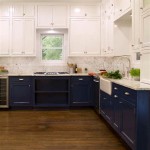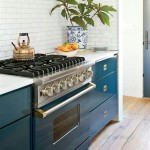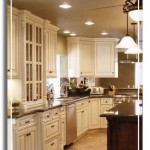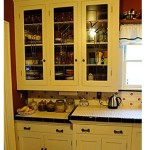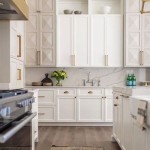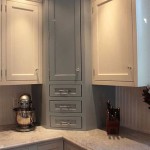How To Cover Old Kitchen Cabinets: Essential Aspects
Updating the look of your kitchen cabinets without replacing them can save you time and money. Covering old kitchen cabinets is a cost-effective solution that can give your kitchen a fresh, new look. However, it's important to consider the essential aspects of this process to ensure a successful outcome. These aspects include preparation, material selection, measurement, application, and finishing. This article will delve into each of these aspects, providing valuable tips and guidance to help you achieve a flawless finish when covering your old kitchen cabinets.
Preparation:
Before covering your cabinets, thorough preparation is crucial. Start by cleaning the cabinet surfaces thoroughly to remove any dust, grease, or debris. Next, inspect the cabinet doors and drawers for any damage or imperfections, such as dents or scratches. Repair any damage before applying the new covering to ensure a smooth and even surface.
Material Selection:
Choosing the right material for covering your cabinets is essential. Consider factors such as durability, ease of application, and cost. Popular options include contact paper, self-adhesive vinyl, laminate sheets, and wood veneer. Each material offers unique advantages and drawbacks, so carefully research each one to determine the best fit for your needs.
Measurement:
Accurate measurements are vital to ensure a precise fit for your cabinet covers. Measure the length and width of each cabinet door and drawer to determine the amount of material you need. If you are using a patterned material, pay attention to the pattern repeat to avoid misalignment.
Application:
When applying the covering material, follow the manufacturer's instructions carefully. For self-adhesive materials, ensure the surface is clean and free of any bubbles or wrinkles. Use a smoothing tool to press the material firmly onto the cabinet surface. If you are using a material that requires adhesive, apply it evenly to both the cabinet surface and the covering material before bonding them.
Finishing:
The finishing touches can enhance the overall appearance of your newly covered cabinets. For a seamless look, consider using edge banding to cover the exposed edges of the material. You can also add decorative elements, such as molding or hardware, to personalize your cabinets.

5 Ways To Add New Life Old Cabinets Daniel Kanter

15 Diy Kitchen Cabinet Makeovers Before After Photos Of Cabinets

5 Ways To Add New Life Old Cabinets Daniel Kanter

25 Easy Ways To Update Kitchen Cabinets

Closing The Space Above Kitchen Cabinets Remodelando La Casa
Reconfiguring Existing Cabinets For A Fresh Look Beautiful Mess

For Those Who Kept Their Old Kitchen Cabinets Pics

5 Ways To Add New Life Old Cabinets Daniel Kanter

80s Kitchen Update Reveal The Handyman S Daughter

How To Cover Old Hardware Holes
Related Posts

